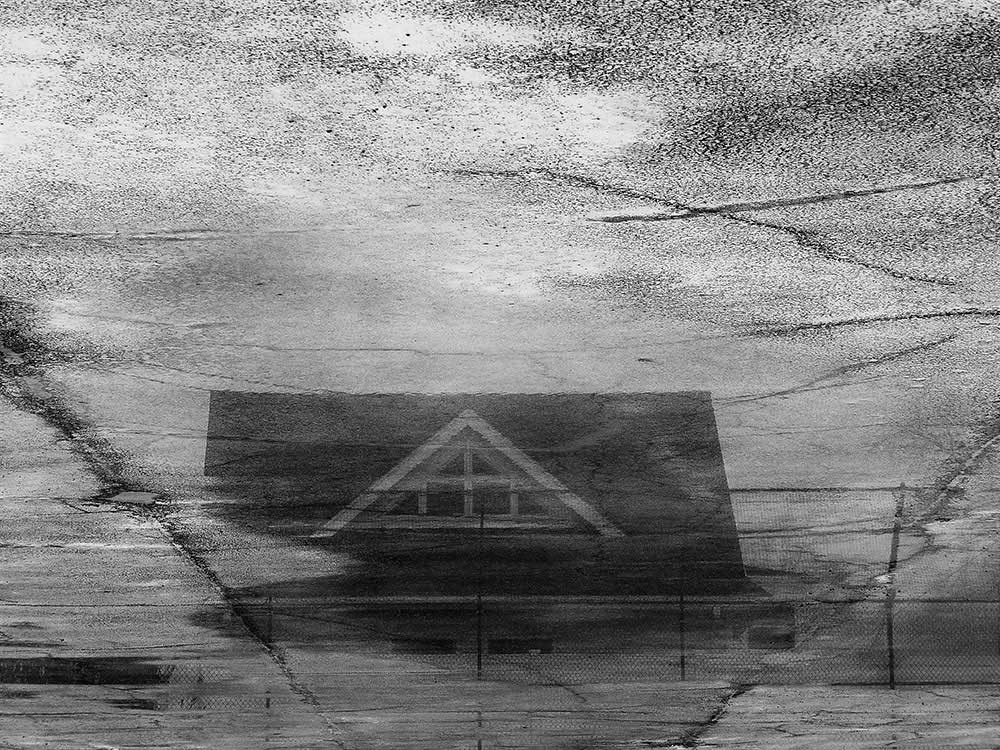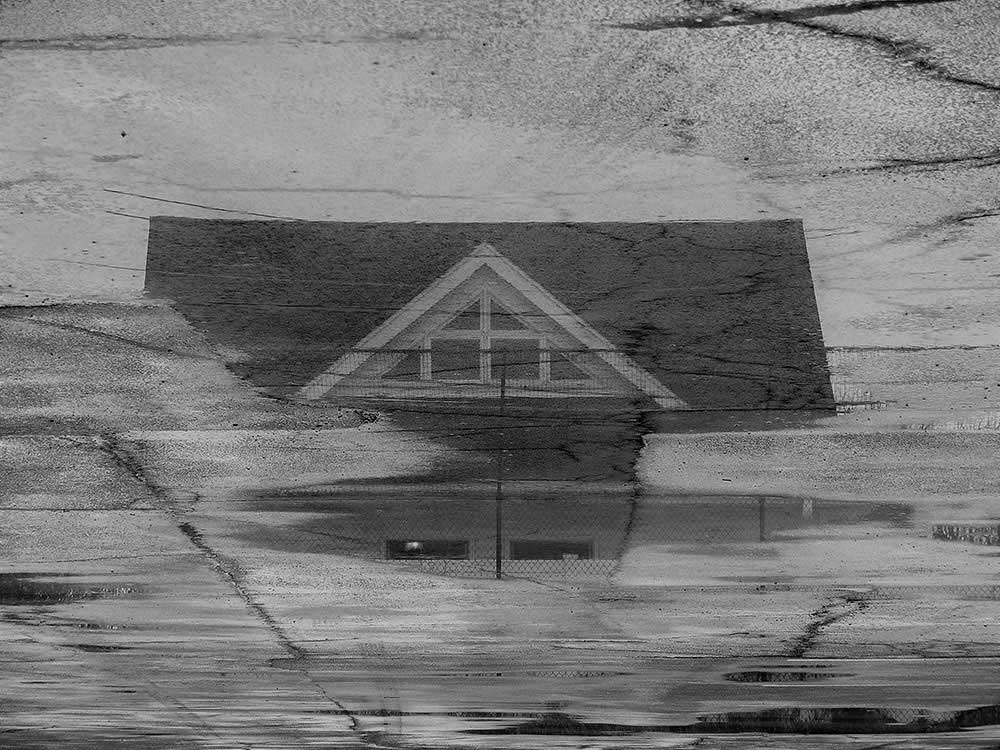“I have always preferred the reflection of the life, to life itself”
Francois Roland Truffaut, 1932-84, Screenwriter, filmmaker & critic
“Ambiguity is imbued with poetical elements, Kantian noumena – and by virtue of its abstraction, it fetches us to the threshold, of several interpretations and visions.”
Raju Peddada, June 21, 2019, 9.58 AM
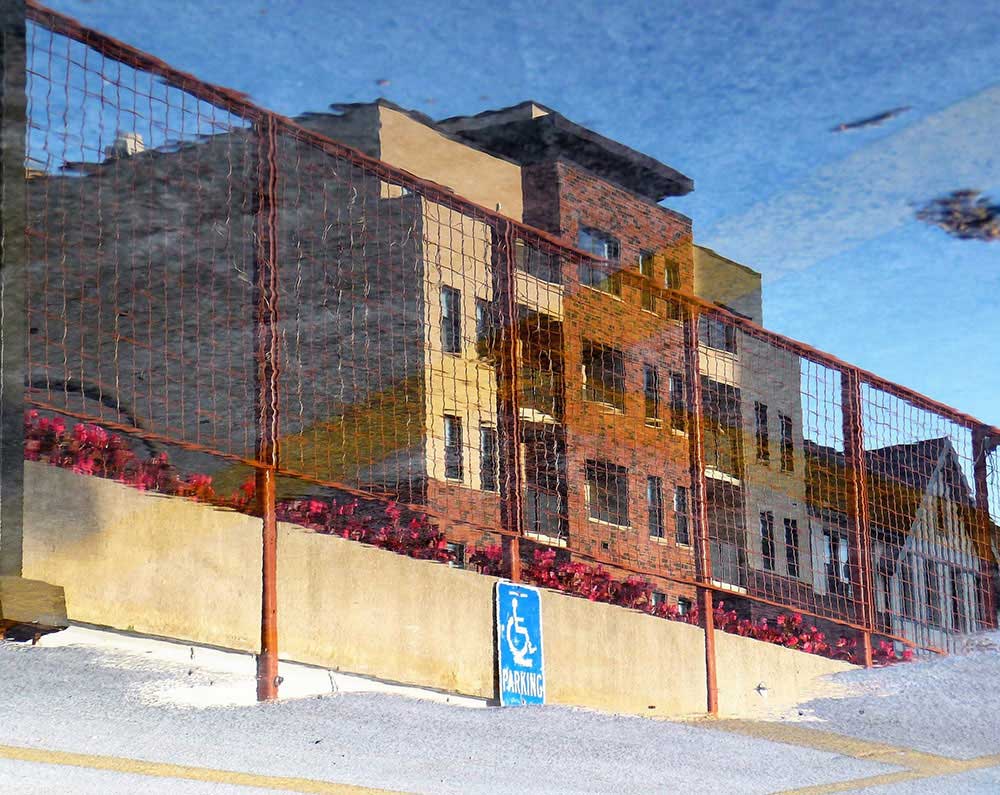
[Preface: In the art of the letters, the artist can render his work in degrees of ambiguity to attain the sublime, but, the abstract art of poetry is where its effect is more obvious. This is the only aspect, that might position fine writing, as equal, if not greater than music, which is a punctilious art form. Wolfgang Mozart was the only practitioner of the aesthetic of dubiousness: ambiguity, in music, but then, he was singular for his invention. This dubiety, in the context of composition, separates writing from music. Music can be composed to effect and convey ambivalence, but never in the composition of it, it’s a mathematical art. Photographic art form, on the other hand, in the hands of a deft artist, can be manipulated to straddle contrasting aspects: clarity vs illusion or impression against resolution, within the same image. In ambiguous landscapes, anomalies do manifest abruptly – these anomalies can be aesthetically disruptive, and to the perceptive: art.]
Last winter, with temperatures really surreal, I was only too happy to be a little spider, jumping around, from title to title in the deep bibliographic canyons of my library. I then realized that there is this hidden ecology in those canyons that I have yet to examine. A variety of spiders, two types of ants, a desiccated cicada and a wasp, several flies suspended on tiny webs, and the cutest resident, sporting fifteen pairs of delicate legs, with origins in the Mediterranean region: Scutigera Coleoptrata, In other words, the house centipede, that bestows on me, occasionally, its beautiful presence. Pests? Naw! We are the damn pests, with our presumptions! That is the tiny world I know that exists in my library, but, “The World of M. C. Escher” is not tiny, it’s a theater of illusions, limited only by our imagination.
As I flipped slowly through this exquisite coffee table book, I came across a graphic illustration (Color plate 3, from Catalog 174) that arrested my advance. It was an image of a still water puddle on the depressed tire tracks that was a mirror to what was above: trees. What really got me was how Escher had rendered it, the mud and tracks are ambiguous, but, the still water, very clear, reflecting the trees above. Absolutely manifest… a shapeless, abstract liquid mirror, reflecting trees, that looked sharper, than in reality surrounding it. The illusion was clearer than the reality. It was this anomaly that was set off against it’s background, like some artwork, within a frame. Freud had addressed this in his thesis on Dreams. He had posited that a dream can posses absolute clarity as long as it lasts, and when we wake up, everything we see is murky.
This seeded an idea. Why not study these specific anomalies: “Liquid Mirrors,” in other words, water puddles, and their beauty in their abruptness, and disruptive clarity contrasting the murkiness around us. The man-made vertical mirror gives us a 180 degrees view, but, the liquid mirror on the horizontal plane, a disruptive phenomenon, caused by the still rain water in superficial depressions, heightens views 360 degrees horizontally, and 180 degrees parabolically, fanning up from zero to one-hundred-eighty degrees at the other end. All one has to do is walk around looking into it for a myriad of perspectives. This is not accounting for the various angles you can shoot for, by bending, squatting and moving your sideways for visuals that would make one dizzy.
Needless to say it, the mundane water puddle on the street is a latent theme park, waiting to be discovered – which, is just another contentious debate, on how we are ready to dole out thousands of dollars per head for plastic experiences, than making our lives more meaningful by observing our surroundings a tad more closely, for nothing. These “cenotes” that spring up after a rain fall, are shapeless, defying the depth perception and when still, reflect the passing world above. Over the years, I have kept my eyes open for every effect I could collect from and on these cenotes in the wake of rainfall. When it’s breezy, these liquid mirrors become impressionistic paintings. If one, so much as extricates oneself from their small screens, while walking or even driving, these wonderful mirrors can be had free!
On October 1, 2019, at around Noon, I waited for some friends by the Chicago Museum of History, on a park bench struggling to read – failing miserably in concentration. Then, I became curious as to what attributed to this failure. There were these sudden blobs of color changes and movements in my peripheral vision, and they emanated from a small puddle, 2 O’clock to where I sat. I moved my eyes up from my book to the puddle, and looked at it carefully. I now knew the source of my failure. The puddle had beckoned to me, as if it knew what I was reading: “Refraction & Motility” by Walter Lancaster, M.D., and seemed to exhort, “Don’t read – experience it!” what I saw, in that seemingly banal puddle was intriguing. At eye level, I saw full trees, no skyline… when I looked into the puddle, I saw the skyline in detail, as an amorphous inverted photograph, vignetted, as if through a periscope. Then, it quivered in the breeze to become an impressionistic painting.
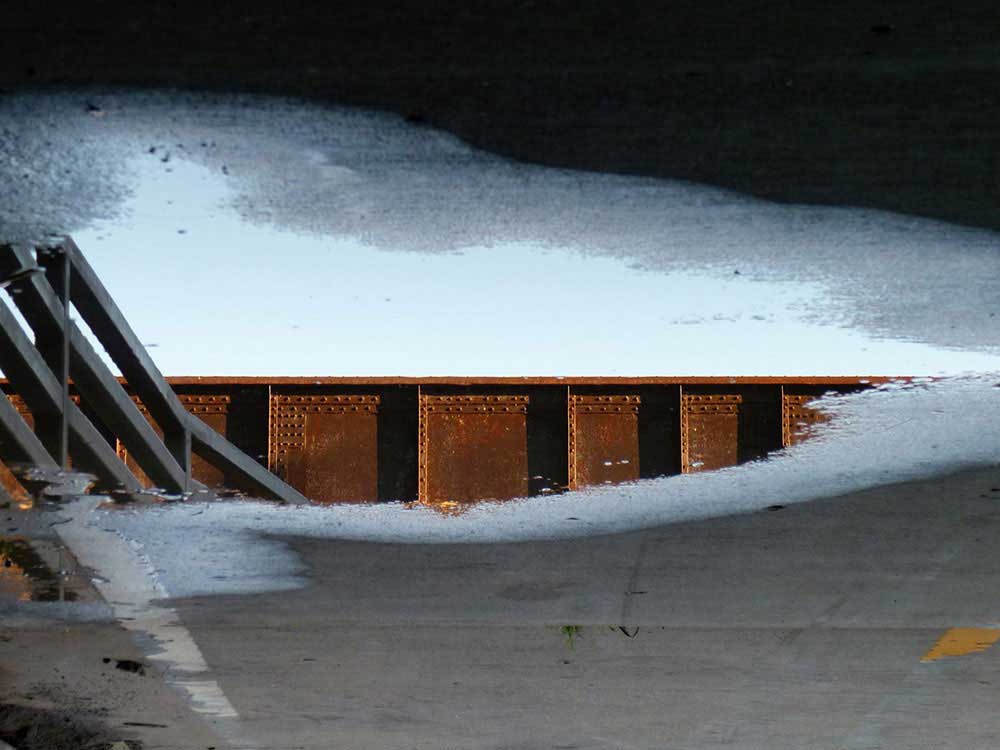
The distant skyline appeared closer, and the angle of reflection shallow, but, the tree, very close to me, at a sharp angle of reflection was just an impression, moving in slow motion. The sky, as the background, changed the overall character of the puddle dramatically, from time to time. It went from being blue, to gray, to violet-peach tints. Set against the dark brown-gray mud, it was a window onto a colorful vaudevillian set that was changed constantly. I squinted at it for that Renoir effect. The joy I derived for almost an hour-and-a-half rendered my head dizzy with ideas. One of them: “The Motile Cenotes,” for which I would record as many as puddles I could find, and project them on to a large white wall using several projectors, in a dark space. The aesthetic effect on our psyches and reactions would make an intriguing study – worthy of pursuit.
The phenomenon of Reflection is very complex, and it would be remiss of me, if I did not share an outline of Dr. Lancaster’s theory in the understanding of it, which is fundamental to all photographers. “When the waves of light fall on a surface, some of the light is absorbed (converted into heat), some is transmitted depending on the transparency of the substance, and the rest is reflected in two ways. If the surface is very smooth, a mirror, the light ray is reflected so that the angle of reflection is equal to the angle of incidence. This is called specular reflection.”
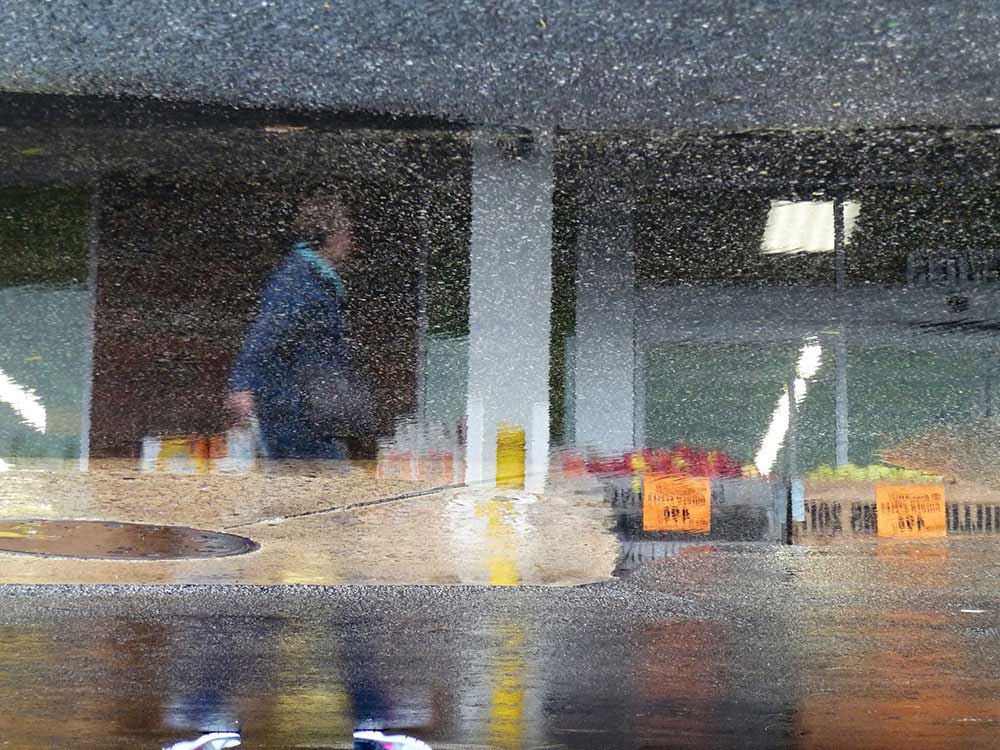
[What is the angle of incidence? In geometric optics, the angle of incidence is the angle between a ray incident on a surface and the line perpendicular to the surface at the point of incidence, called the normal. The ray can be formed by any wave: optical, acoustic, microwave, X-ray and so on.]
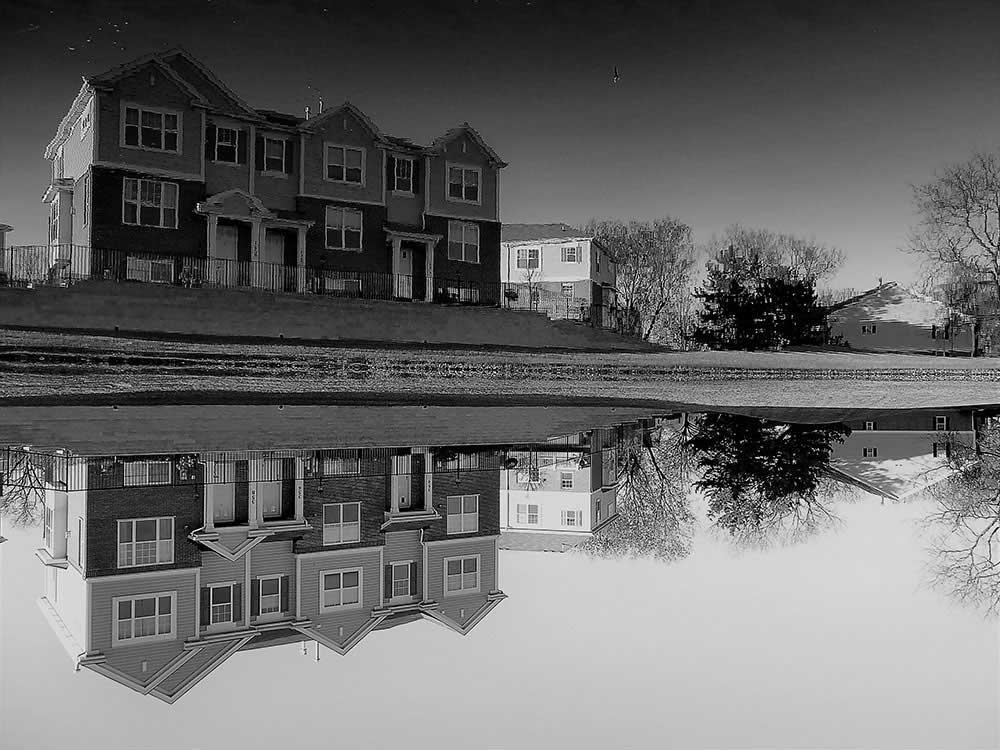
“The other form of reflection is diffusive or diffuse reflection as from all surfaces not perfectly smooth. It is by diffuse reflection that objects are seen; that is all objects that do not emit light are seen by the light they reflect which falls on them from some source. (the way we all see the moon) In perfectly diffuse reflection, light falling on a surface is reflected in all directions equally. Most surfaces combine some regular and specular reflection with diffuse reflection. Surfaces vary not only in the diffuseness with which they reflect light falling upon them, but they reflect and absorb different wave lengths differently. Thus a surface may absorb most of the red rays and reflect the green rays. Such a surface will appear green. If a surface reflects all wavelengths alike, then the color of the light falling in the surface is not changed by reflection. White paper looks white when daylight falls on it since daylight has all the different wave lengths mixed together. The same paper seen by light containing only red rays in it would look red since only red rays would be reflected…
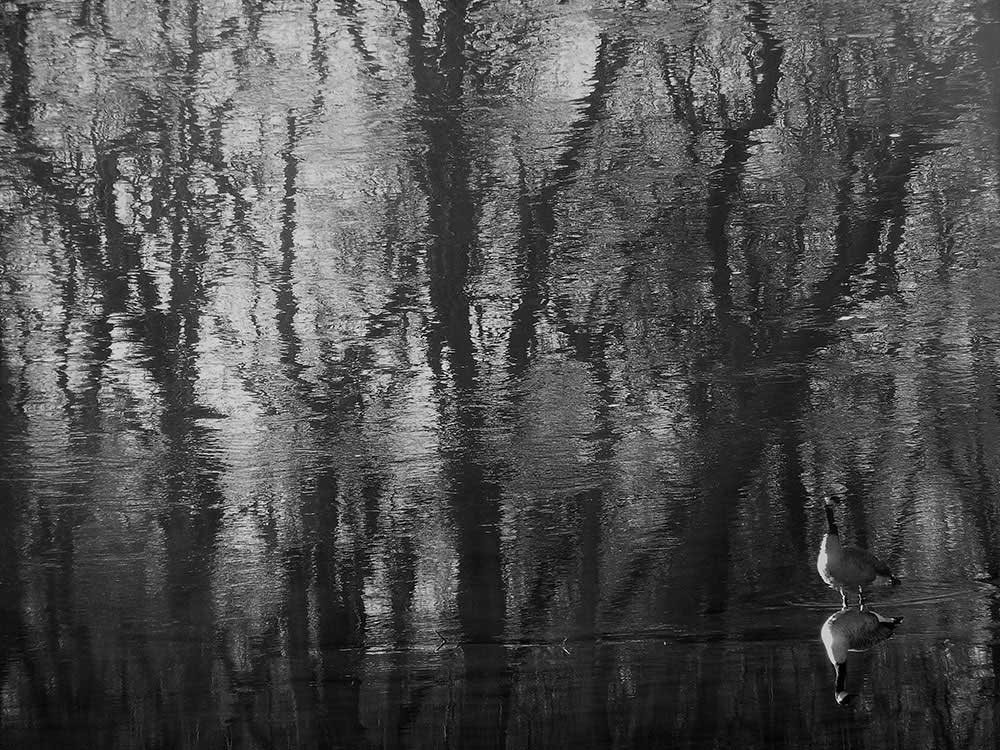
There are two laws of specular reflection (mirror). The first is that the angle of incidence and the angle of reflection are equal; and the second is that the incident and reflected rays and the normal to the surface are in the same plane.” If I carried over this observation and applied it to our liquid mirrors – then, several things would become manifest… or would they? The water puddle is also a kinetic object, a container of sorts with an uneven bottom, (now oil would be different) which reacts to breeze, and vibrations of heavy equipment near it. Several complications emerge if we apply the laws of specular reflection to our liquid mirrors. First: would the angle of incidence and reflection be equal, given the “Chanced” flat surface atop with an uneven bottom? Second: would the light rays diffuse if the water surface is kinetic? Third: what happens when the puddle is clear and shallow versus dark or opaque (dirty) water?
The theory or the laws of reflections are applicable to definite and smooth or rough surfaces, but, is it applicable for liquid surfaces? This could be study unto itself. This is a whole new frontier for exploration, but, as of now, I am loathe to explore the aspects of Reflection correlated with physiological optics, till I have exhausted my study of all the aesthetic facets yielding from such phenomenon. I don’t want to muddy up my pleasure with theories, in looking at these small cenotes that manifest after the rains – that are like eyes, reflecting all the life around us. [© Raju Peddada, October 5, 2019 – All Rights Reserved on the text and images.]
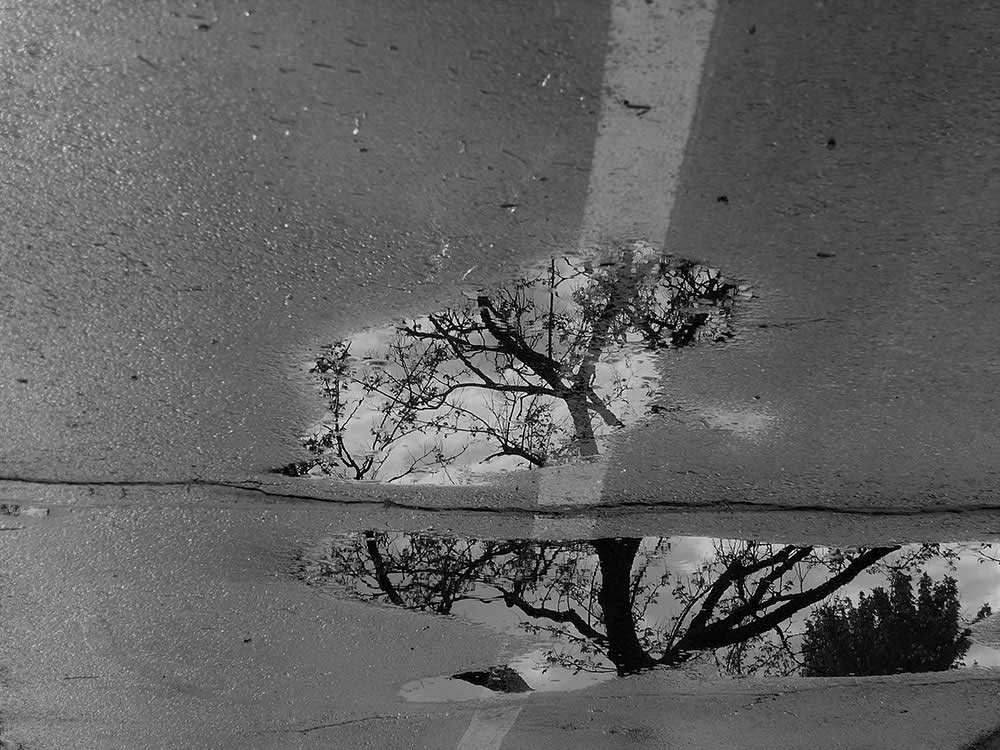
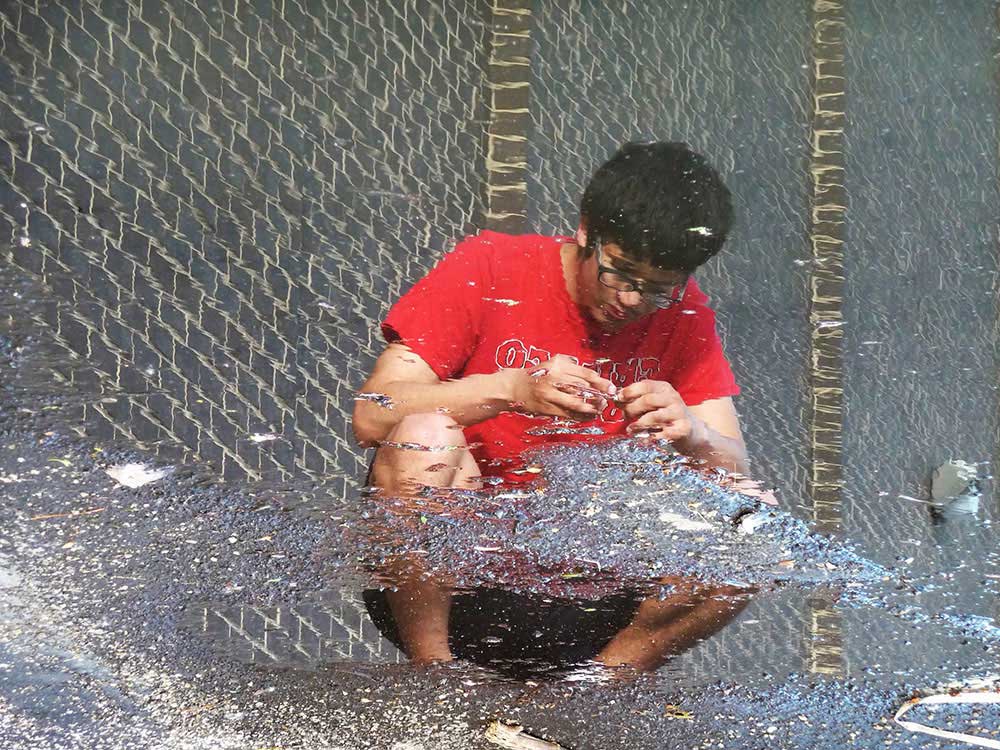
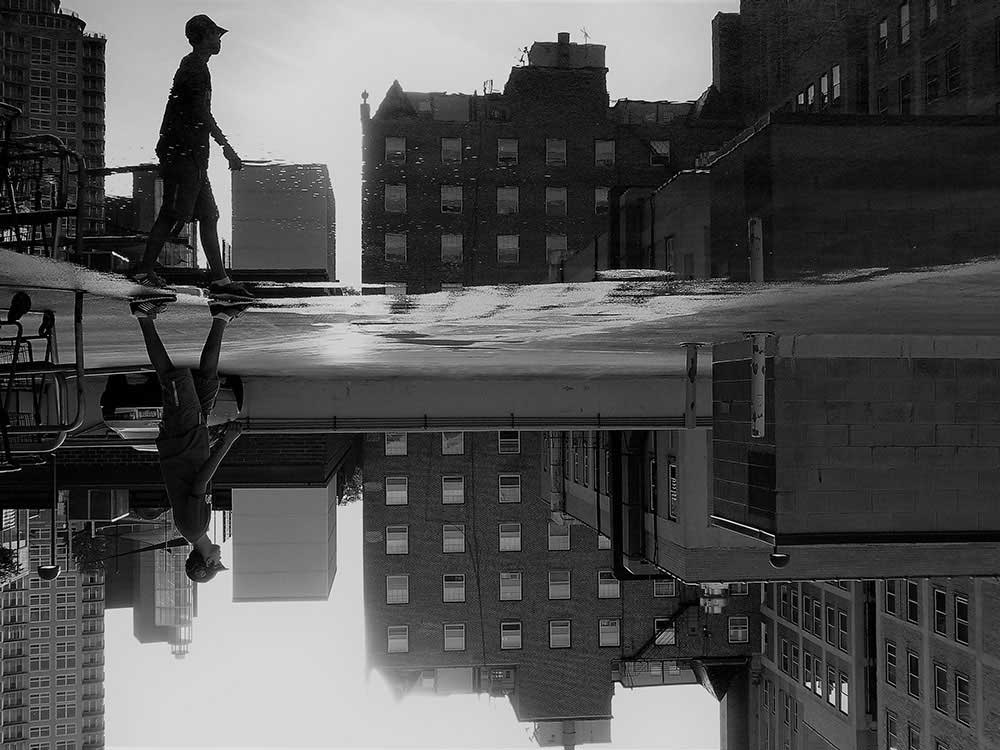
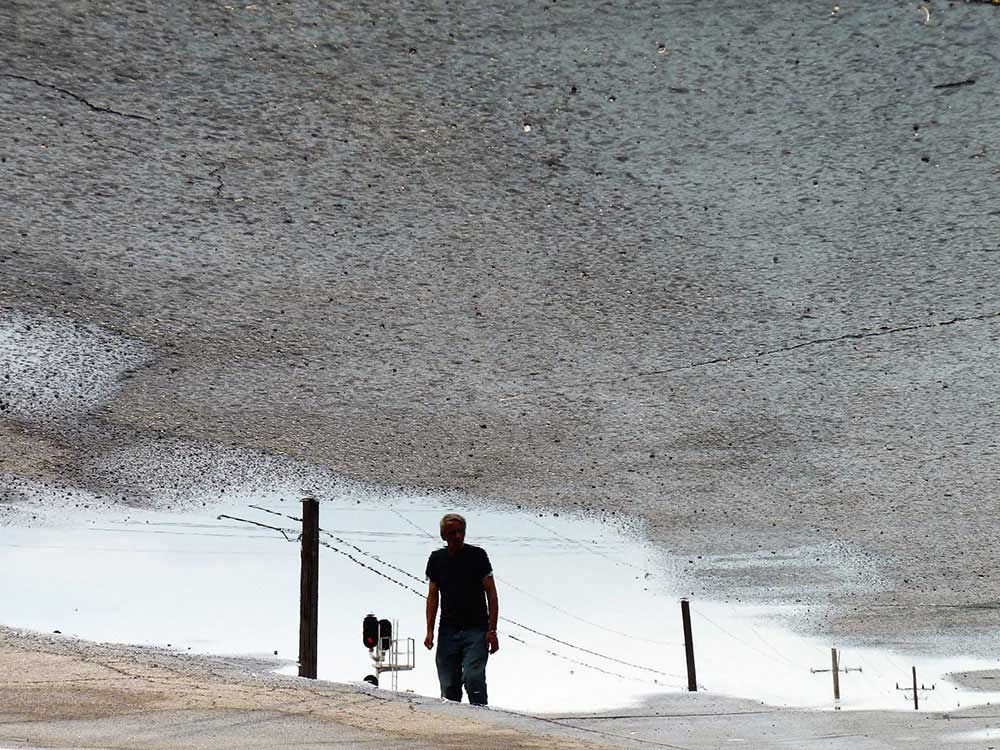
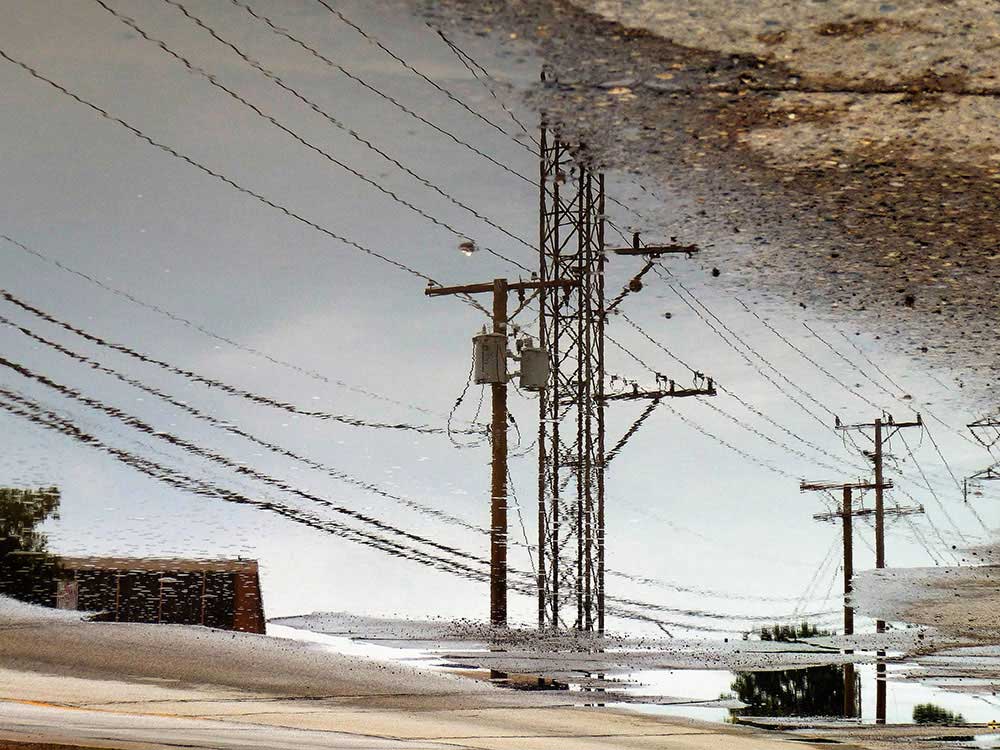
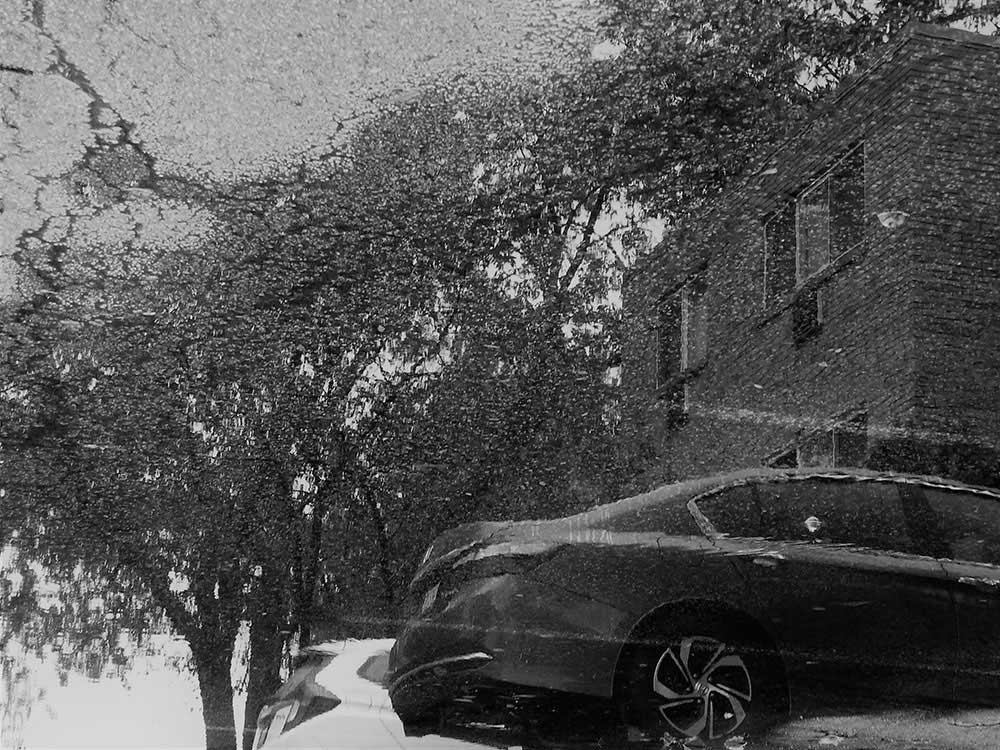
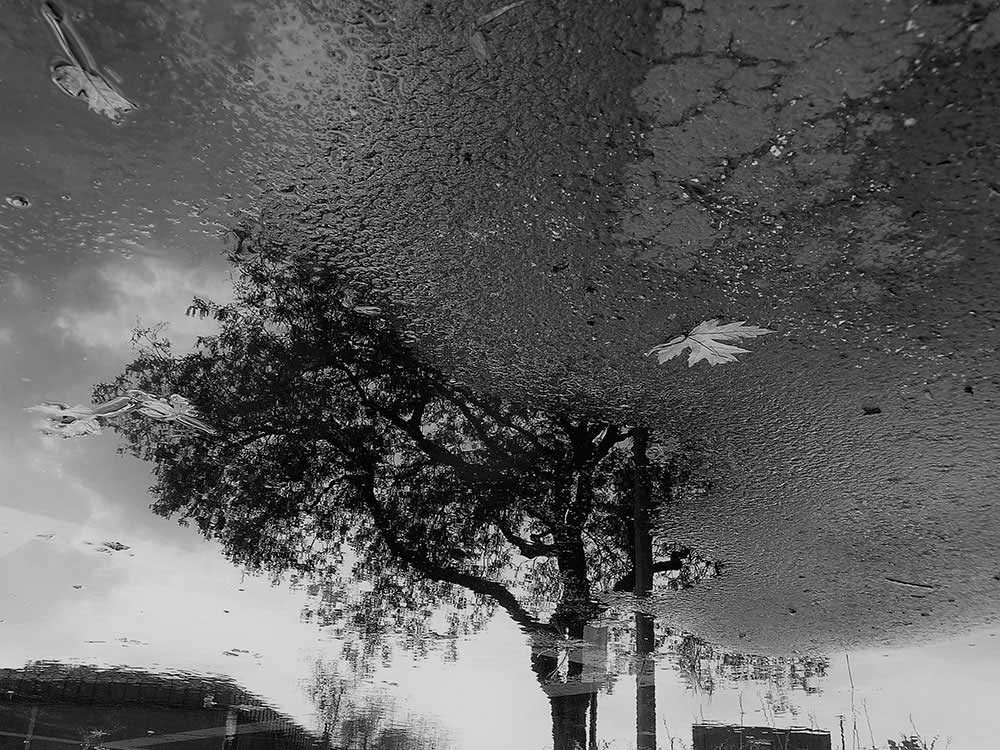
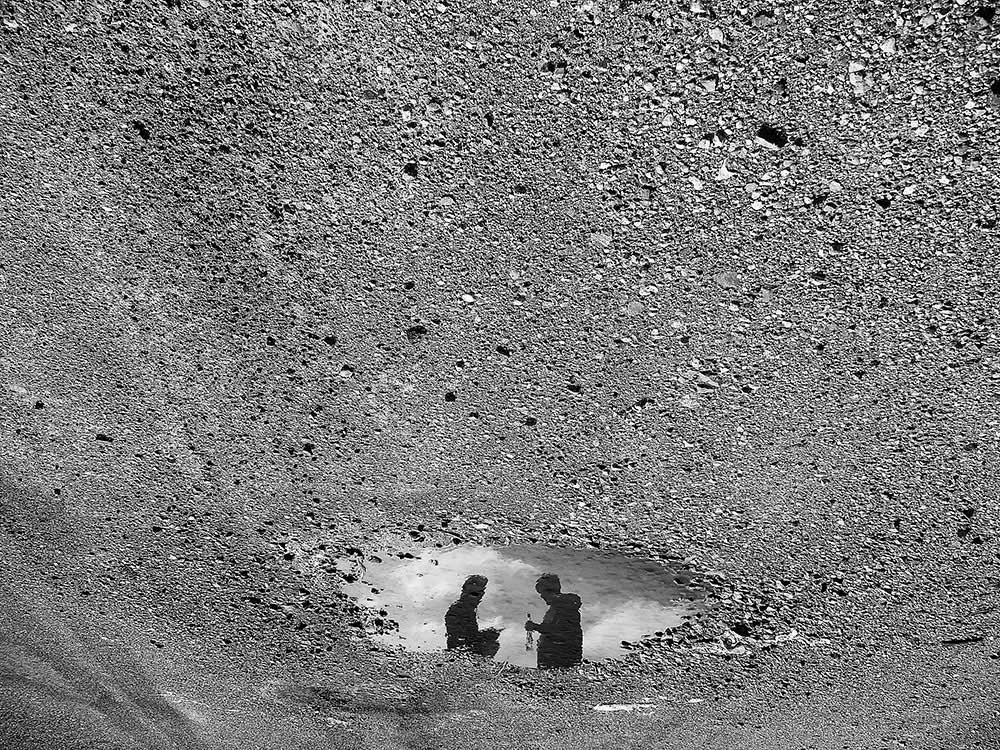
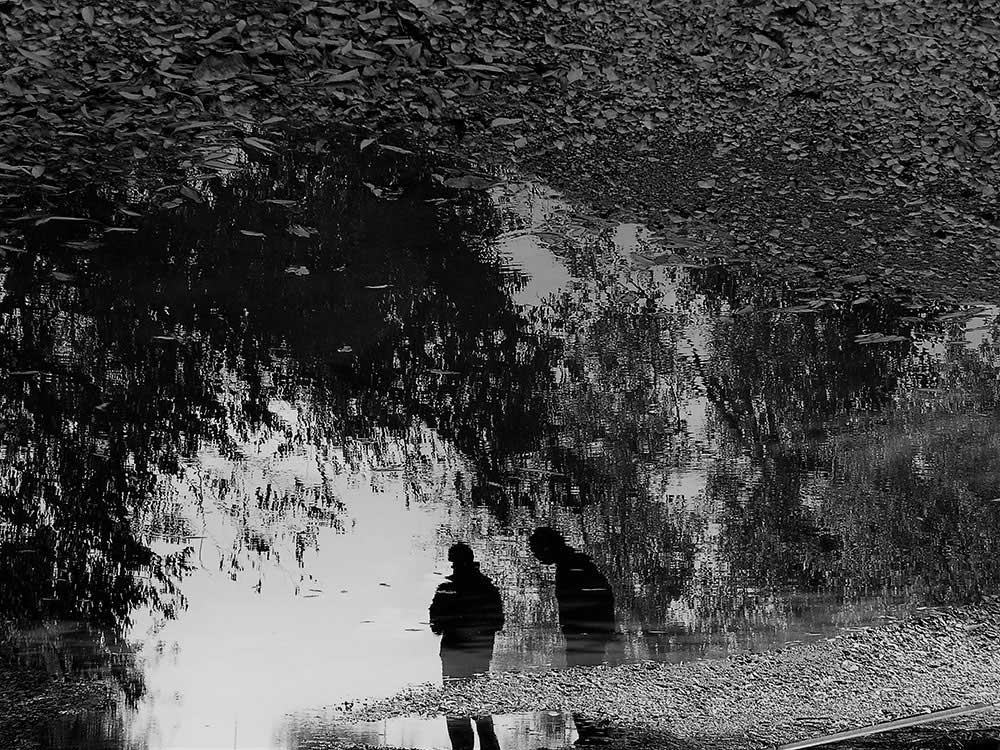
Raju Peddada
Raju Peddada was born in India, and migrated to the United States in 1983. He is the founder and CEO for PEDDADA. COM since 1999, and also a producer/writer for Satyalu+Kristi Media, USA. He is a design provocateur, an originalist in design contemplation, who draws inspiration not from other designers, but from nature, history and literature. He has 22 Design Patents, and was also responsible for several critically acclaimed and sold out products launches to the high end luxury furnishings market. He has been editorially featured in scores of international culture-design magazines as the “Taste-maker,” in Interior Design, Clear, Dwell, Spaces, Domus, Abitare, Interni, Frame, Monitor, Objekt, Chicago, the Chicago Tribune, and Cable news. In addition he also is a freelance journalist, with over a 100 essays-articles- reviews in literary magazines like Swans.com, Bookforum, Spaces, and the NY Times. He is a photographer, who in the summer of 2017, released his exploratory thesis on “The Aesthetics of Ambiguity,” which essentially shifts the aesthetic paradigm, from the stillness aesthetic to that of ambiguity, in sensing the beauty of our movement and condition in the urban setting. Three photographic exhibits are in the offing. He is the author of four small books.



